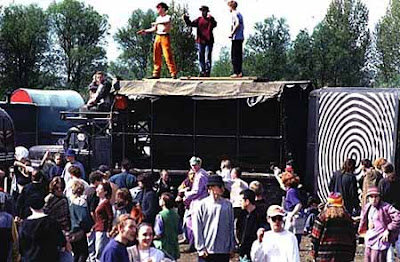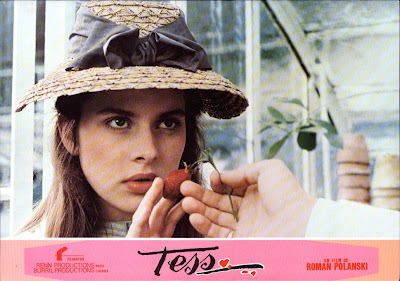 A man was convicted this week of the murder of 18 year old Dinah McNicol (pictured) in 1991. Peter Tobin is now known to have killed at least three young women, including Dinah whose body was found in his garden in Margate in 2007.
A man was convicted this week of the murder of 18 year old Dinah McNicol (pictured) in 1991. Peter Tobin is now known to have killed at least three young women, including Dinah whose body was found in his garden in Margate in 2007.
 A man was convicted this week of the murder of 18 year old Dinah McNicol (pictured) in 1991. Peter Tobin is now known to have killed at least three young women, including Dinah whose body was found in his garden in Margate in 2007.
A man was convicted this week of the murder of 18 year old Dinah McNicol (pictured) in 1991. Peter Tobin is now known to have killed at least three young women, including Dinah whose body was found in his garden in Margate in 2007.

 I was in Trafalgar Square on Friday night, where there was a fairly surreal assemblage of sights and happenings. There was the big Christmas tree with carol singers; a giant Menorah for the Jewish festival of Chanukah (right in the above picture); the World Wildlife Fund's London Ice Bear - a melting sculpture to highlight global warming...
I was in Trafalgar Square on Friday night, where there was a fairly surreal assemblage of sights and happenings. There was the big Christmas tree with carol singers; a giant Menorah for the Jewish festival of Chanukah (right in the above picture); the World Wildlife Fund's London Ice Bear - a melting sculpture to highlight global warming...
 It all put me in mind of the history of this place as a focus for all kinds of collective celebration and protests in London, from the Bloody Sunday demonstrations of 1887 to the poll tax riot in 1990, from dancing in the fountains on the anti-Criminal Justice Act demo (May 1994) to dancing outside the national gallery on the Reclaim the Streets 'March for Social Justice' demo (organised with the striking Liverpool dockers) in April 1997 - pictured below:
It all put me in mind of the history of this place as a focus for all kinds of collective celebration and protests in London, from the Bloody Sunday demonstrations of 1887 to the poll tax riot in 1990, from dancing in the fountains on the anti-Criminal Justice Act demo (May 1994) to dancing outside the national gallery on the Reclaim the Streets 'March for Social Justice' demo (organised with the striking Liverpool dockers) in April 1997 - pictured below:
 The local press have picked up on the story this week. The South London Press had the headline 'pirates to the rescue', while the Southwark News has the full story, in terms of actually giving credit to the stations involved - Lightning, Galaxy, Vibes, Genesis and Ontop FM.
The local press have picked up on the story this week. The South London Press had the headline 'pirates to the rescue', while the Southwark News has the full story, in terms of actually giving credit to the stations involved - Lightning, Galaxy, Vibes, Genesis and Ontop FM.There's some interesting examples online, including at the Daughters of the Republic of Texas Library at the Alamo blog. The following example comes from that collection - the front of 'a dance card for a masquerade ball held at Lenzens Opera House on March 7, 1891. The name "Miss Laura Stein" appears in the lower right corner' - probably the name of a dancer at the ball.
 There's some examples from Cork at Set Dancing News, including this one for a National Dance at the Hibernian Hall in 1916:
There's some examples from Cork at Set Dancing News, including this one for a National Dance at the Hibernian Hall in 1916:


 'It was a fine September evening, just before sunset, when yellow lights struggle with blue shades in hairlike lines, and the atmosphere itself forms a prospect without aid from more solid objects, except the innumerable winged insects that dance in it. Through this low-lit mistiness Tess walked leisurely along...
'It was a fine September evening, just before sunset, when yellow lights struggle with blue shades in hairlike lines, and the atmosphere itself forms a prospect without aid from more solid objects, except the innumerable winged insects that dance in it. Through this low-lit mistiness Tess walked leisurely along...
(Pictures - top, Nastassja Kinski in the 1979 film version of Tess; bottom, people dancing in a barn in Dorset 2008 by Caiusp at Flickr)
 6. When and where did you last dance?
6. When and where did you last dance?
(photo - Roger Robinson under the spotlight on Saturday)
Corsica Studios and La Provincia
Corsica Studios is located in a railway arch directly underneath Elephant and Castle station so joins the list of great railway arch clubs which I will eventually get round to writing about. Two good-sized rooms with nice sound system plus a bar overlooked by a picture of Dickie Davies (yes really). At the back there's a covered outside area shared by the other railway arches, including La Provincia, a Latin America club frequented mainly by Colombians. Thanks to a Spanish speaking member of our party we ended up in there for a while too.
As someone who is always as fascinated by the crowd and dance styles as the music when I go out, it was interesting to compare the two. Dress codes weren't that dissimilar - jeans and t-shirts predominating, though a bit smarter in La Provincia. Gender balance was similar too - fairly evenly matched, but with more men than women. Hyperdub though was very crowded, whereas in La Provincia people were sitting round tables.
And the dancing was very different - in La Provincia it was exclusively salsa dancing couples, whereas in Corsica there wasn't room for much more than nodding heads, shuffling on the spot, and hands in the air for the more enthusiastic. At Hyperdub a lot of the dancing was in rows facing the front, which means people are mostly looking at the back of the person in front of them. Understandable for a live performance, but something I have never really understood when it's just a DJ. I don't think I ever saw this before the 'superstar DJ' boom in the late 1990s, in fact I distinctly remember noticing it for the first time at the famous 1999 Armand Van Helden vs. Fatboy Slim clash where they DJed in a boxing ring in the middle of Brixton Academy. Not proposing that people should start trying out strict tempo Latin moves to dubstep - though that might be fun - but there is something to be said for shifting the balance back from the DJ to the dancefloor as the centre of attention.
Anyway just some thoughts rather than criticisms, it was a good night enlivened even more by this sense of these different dance worlds coexisting in time and space in a corner of South East London.  Some more reviews of the night: Uncarved, Yeti Blancmange, Vice Magazine (from where this Moses Whitley photo comes).
Some more reviews of the night: Uncarved, Yeti Blancmange, Vice Magazine (from where this Moses Whitley photo comes).
(cross posted at Transpontine)
 Suzie Quatro - she so invented punk
Suzie Quatro - she so invented punk
2. What's the most interesting/significant thing that has happened to you while out dancing?
I remember particularly a few years ago going to a Labour Party event in a stately home/hotel in North Wales in a work capacity, and while everyone was networking a few of us went to dance in another hall where a DJ was playing some old soul tracks more or less to himself, and after a while the guest of honour sneaked out (a Welsh Assembly minister) and joined us, literally dancing round her handbag. Beautiful summer evening, and it just suggested music as a common bond, overcoming boundaries, making friends, no words needed ...
3. You. Dancing. The best of times…
Probably 1980s going to see underground pop groups like the June Brides, Jasmine Minks playing to horribly small crowds but having a whale of a time dancing with abandon.
4. You. Dancing. The worst of times…
I really feel uncomfortable in large crowds with flashing lights (unsociable so-and-so). I have particular unpleasant memories of a Ramones gig at The Lyceum where the punks all seemed to be 7 foot tall and were slam dancing madly. It just seemed horribly macho and boring.
5. Can you give a quick tour of the different dancing scenes/times/places you've frequented?
Well, Alan McGee's Living Room, Dan Treacy's Room At The Top, Bay 63 were regular haunts in mid-'80s. Later put on own events with live groups/old soul discos etc in West End pub function rooms, then into the '90s becoming obsessed with drum 'n' bass/Mo' Wax trip hoppy stuff though only occasionally getting to places like the Heavenly Social due to shift work patterns. More recently outings seem to be confined to '60s soul type events.
6. When and where did you last dance?
Around my living room, waltzing to a Ewan MacColl song.
7. You're on your death bed. What piece of music would make your leap up for one final dance?
Candy Skin by the Fire Engines.
All questionnaires welcome - just answer the same questions in as much or as little detail as you like and send to transpontine@btinternet.com (see previous questionnaires)

 'But that music is a language by whose means messages are elaborated, that such messages can be understood by the many but sent out only by few, and that it alone of all the languages unites the contradictory attributes of being at once intelligible and untranslatable - these facts make the creator of music a being like the gods and make music itself the supreme mystery of human knowledge' (Claude Lévi-Strauss, The Raw and the Cooked, 1969)
'But that music is a language by whose means messages are elaborated, that such messages can be understood by the many but sent out only by few, and that it alone of all the languages unites the contradictory attributes of being at once intelligible and untranslatable - these facts make the creator of music a being like the gods and make music itself the supreme mystery of human knowledge' (Claude Lévi-Strauss, The Raw and the Cooked, 1969)